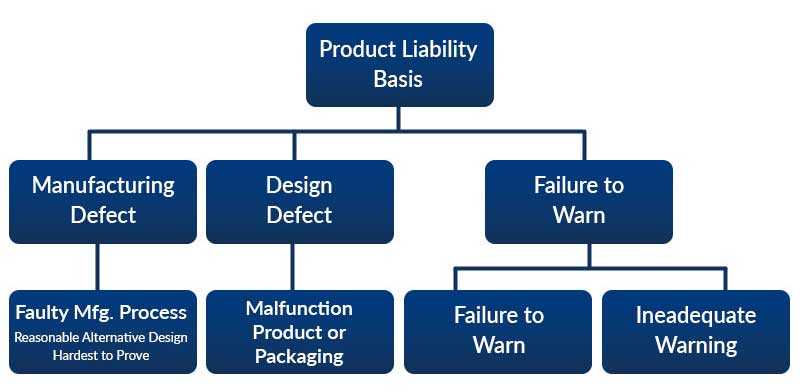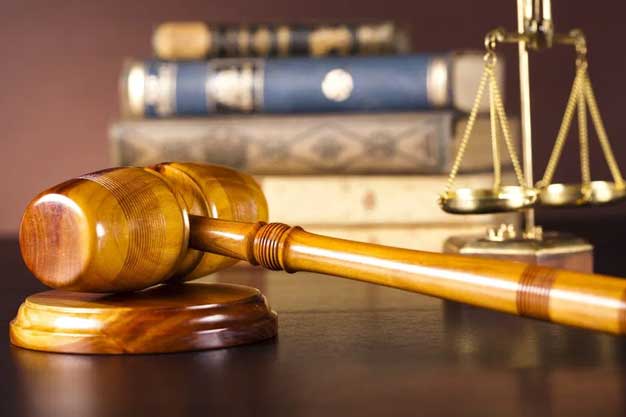What is Product Liability?
Liability of a manufacturer, distributor, or lessor to customers, users for physical injury or property damage incurred by the products. One can sue based on a) Negligence, b) Breach of warranty; c) Misrepresentation; and d) Strict tort liability
Types of Liability
Liability due to Negligence
In order to prove negligence in a product liability case, plaintiff must show that the defendant owes a certain standard of care, that the manufacturer failed to meet that standard, and that you were injured as a result. Case factors are: Designing the products, Selecting the materials, Using appropriate production process, Assembling and Testing of the product, Placing adequate warning on the products.
Liability due to Breach of Warranty
Breach of warranty occurs when a seller fails to fulfil the terms of a promise, argument, or representation made about the product's quality or form. The law assumes that a seller makes such warranties about the products he or she sells and that the seller must stand by these claims.
Misrepresentation
Promotion of a product in advertisement and sales refers to the process of misleading customers about a product's protection, usually by diverting attention away from the risks associated with its use. The deliberate concealment of possible hazards or negligent misrepresentation constitutes an action. The plaintiff's ability to show that he relied on the statements made is critical to his rehabilitation on the grounds of misrepresentation.
Strict Liability
Strict liability means that the vendor or manufacturer is responsible for all persons who may be insured by the product, even though they are not at fault.A producer, seller, or lessor of products will be responsible for any personal injuries or property damage to customers, users, and bystanders caused by the goods it produces, sells, or rents, regardless of intent or the exercise of due care.

Consumer Protection
Many states have passed consumer safety legislation that spells out concrete solutions for a number of product flaws. The "economic loss law" means that strict liability is usually impossible for goods that harm only themselves. Statutory remedies are frequently given for defects that merely make a product unusable (and therefore cause economic injury) but do not cause physical injury or damage to other property. Lemon laws, which became popular because cars are always an American citizen's second-largest investment after purchasing a home, are the best-known examples of consumer protection laws for product defects.
Joint and Several Liability
If several defendants are held jointly and severally liable for a single injury, they will be held jointly and severally liable. This means that, regardless of how the court apportioned liability, the plaintiff can opt to receive all of his damages from one defendant or any of his damages from each defendant. The defendant or defendants who pay the plaintiff would then seek damages from the other defendants who were found liable, in proportion to the sum for which the court found them liable.
Example: If a building's roof caves in, injuring you, and the court determines that the architect was 10% at fault for design error, the project manager was 20% at fault for failing to properties supervise, and the roofing contractor was 70% at fault for construction error, you might opt to sue the architect for all of your losses, even though he was only 10% at fault. The architect will then have to seek restitution from the other defendants in relation to their share of the blame. However, if one of the defendants were bankrupt, he may not be able to get any of his money back.

Standard of Proof
- The plaintiff has to prove all of the elements of the tort of negligence on what is called a balance of probabilities.
- This means he has to prove that there was a greater than 50% chance that the defendant's carelessness caused the plaintiffs loss.
- If the evidence of both sides is found to be equally believable by the trier of fact (i.e. the judge or jury), then the plaintiff will lose.
Let’s talk with us!
Don’t think that the product liability cases are complex to be proven. Our experts will help you best in every specific!

Submit your case via Instant Form fiiling or Customer Support Portal
Leave Us Your Details
We will get back you shortly
